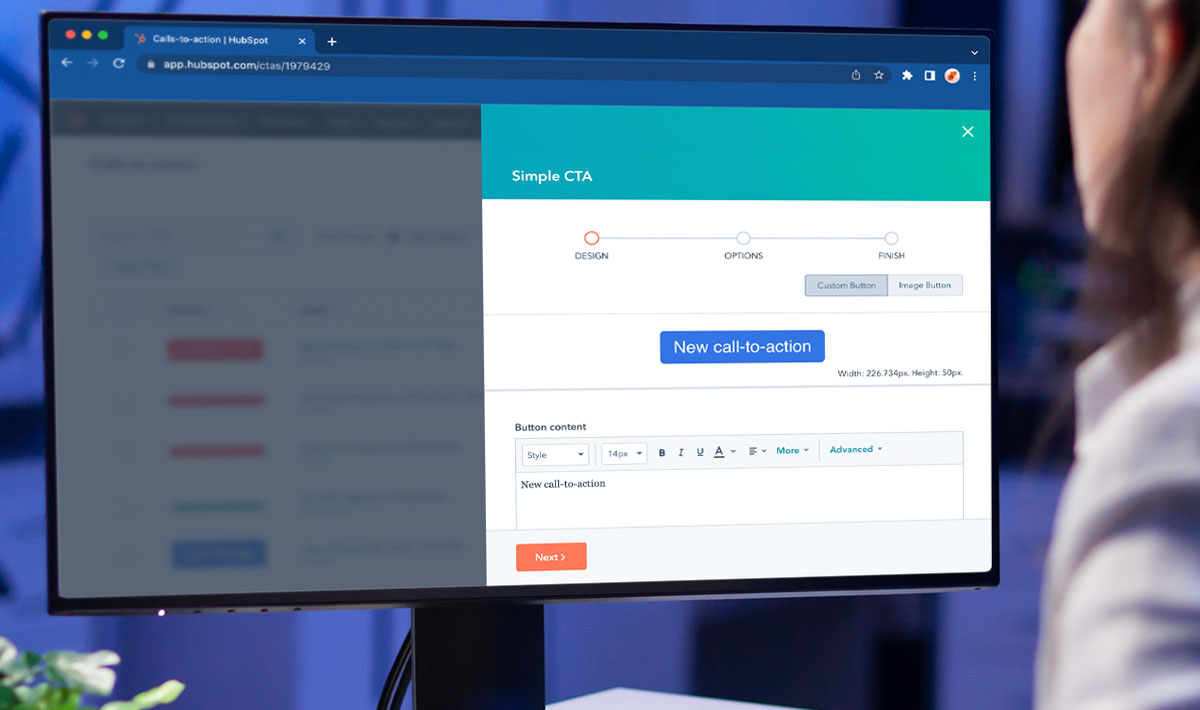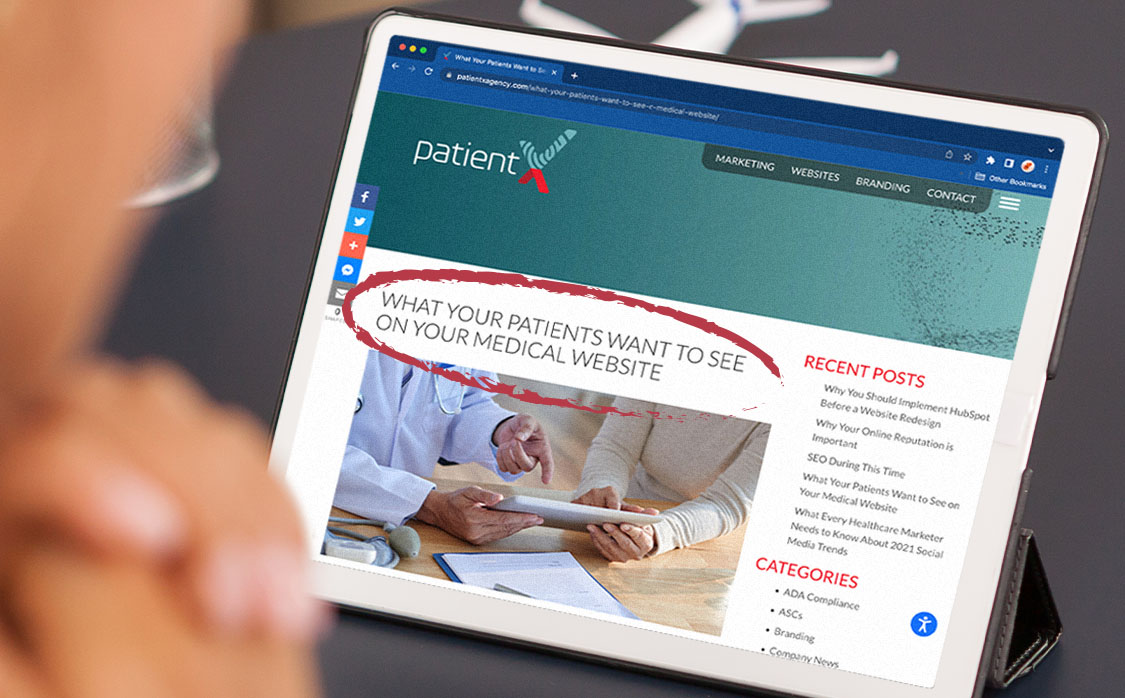Whether you’re an ambulatory surgery center or a single physician practice, optimizing your website to generate and nurture leads means you’re more likely to welcome new patients.
You’re probably familiar with the notion of optimization in a marketing context. You may have optimized your website for social media or search engines, for example. And that makes sense–you want more users to visit your website.
A website optimized for lead generation can help you turn all those new website visitors into new patients. Whether you’re working with a big marketing agency or relying on in-house talent, thoughtful optimization will turn users into leads faster than you might think. And you can start with the following five steps.
Use Landing Pages to Drive Conversions
Landing pages have long been an incredibly effective waypoint on the lead nurturing journey. In part, that’s because a landing page signals the end of one phase of lead nurturing and the beginning of another.
Maybe the user clicked on a search result for a new surgical technique unique to your practice. Or perhaps they want to download a free PDF that will help them prevent arthritis. To arrive at your landing page, the user has already demonstrated an interest in your content.
This means landing pages represent an incredibly potent opportunity to turn these webpage users into qualified leads.
 You can do this in several ways. The first step is to combine clear and compelling copy with a striking design. After all, for most leads, your landing page will be your only chance to make a good first impression. Once you’ve made that impression, it’s critical that leads know what to do next, so ensure you have a very clear and easy-to-see Call to Action. Explain how the next step will benefit leads, and provide an easy way to get there.
You can do this in several ways. The first step is to combine clear and compelling copy with a striking design. After all, for most leads, your landing page will be your only chance to make a good first impression. Once you’ve made that impression, it’s critical that leads know what to do next, so ensure you have a very clear and easy-to-see Call to Action. Explain how the next step will benefit leads, and provide an easy way to get there.
Design Conversion-First Webpages
If your webpages are going to be optimized for lead generation, they should also be designed and built for the same purpose. There are a couple of ways to ensure you’re providing a high-quality experience while simultaneously moving leads to the next step in their journey:
- Make sure your page passes the “Blink Test.” Every user will decide in the first 3-5 seconds whether they want to stay on your website. That’s the blink test–and that’s how long you have to hook a user.
- Create a clear header that effectively communicates your primary ideas to users.

- Emphasize social proof (such as testimonials and logos of trusted partner organizations or professional associations) and make sure to quickly and effectively tell users what makes you special and unique.
- Make sure that the design of the webpage leads the user’s eye to the next step (usually a CTA).
- Make your CTAs crystal clear. You don’t want to leave users confused about what action to perform next.
Deploy a Live Chat Service on Your Website
Healthcare organizations that interact with patients need to follow strict HIPAA guidelines in terms of protecting patient privacy. That can make an online chat function risky–and it’s why we tend to recommend against them for patient-facing organizations.
However, for healthcare companies that interact with other industries, live chat can be an incredibly useful tool for generating leads. Studies and surveys back this up: Something like 42% of web users prefer a live chat option (compared to 23% for email or 16% for social media). This means if you don’t have a live chat function, you could be missing out on opportunities to capture important leads.
 Best practices for live chat in a B2B setting include the following:
Best practices for live chat in a B2B setting include the following:
- Take a look at your data to find your most popular pages. Deploy your live chat service on these pages first.
- If you have to use a live chat bot, ensure that your bot is obvious. Most clients do not enjoy talking to a bot–and they enjoy it even less when you try to trick people into thinking your bot is a real person.
- If possible, allow your customer service team to integrate with your live chat function, so you can nurture leads and resolve customer questions right in one place!
Again, this isn’t something you’d want to use with patients; but for healthcare companies that have no patient-facing element, live chat can be a useful tool.
Embrace A/B Testing
There’s an old saying that familiarity is the enemy of understanding. You’re familiar with your audience, you feel like you really know them–so you make assumptions about what will generate leads and what won’t.
The trouble is, those assumptions may not be accurate. That’s why it’s absolutely essential to constantly use A/B testing to really understand what your patients want and how they’re behaving. It’s okay to have a hypothesis about what resonates with patients–but testing that hypothesis will create ever-increasing lead conversion rates.

For example, let’s assume you’re trying to market a new spinal procedure that pays your ASC $9000 per patient on average. Your “A” test (that’s your default assumption) nets 6 new patients. But your “B” test (the one you didn’t think was going to work) nets 8. In the short term, that “B” test helps your ASC make an extra $18,000. But in the long term, you’re also learning more that will increase your marketing ROI going forward.
Don’t Forget to Put the “Nurture” in “Lead Nurturing”
Generating leads is going to lead to a higher ROI (and more patients) if those leads are funneled into an overall lead nurturing program. And your website is a critical part of moving leads from one part of the journey to another. Optimization in this case means having a website that:
- Collects relevant lead data in non-intrusive (but transparent) ways.
- Presents fantastic and useful content that users actually want.
- Sends follow-up emails designed to continue engaging the lead.
- Facilitates a dynamic and flexible approach, so you can continue to nurture your leads in a variety of circumstances.

Time and resources devoted to lead nurturing can improve the overall number of patients walking through your doors–sometimes by as much as 50%.
Conclusion
It probably feels like your website is doing a lot of work! That’s true–any website is going to be a hub for a wide variety of marketing strategies. That’s why a website that’s optimized for lead generation can improve your ROI in so many areas, and help more patients get the care they need.
If you feel like your website could be doing more, why not have the experts at PatientX perform a thorough audit of your marketing funnel.

